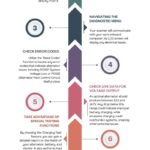The 2001 Ford F250, particularly those equipped with the 7.3L Powerstroke diesel engine, are known for their reliability and power. However, one common issue that owners face is a lack of power to the OBD2 port, making diagnostics and programming difficult. This article will explore potential causes and troubleshooting steps for a 2001 F250 with no OBD2 power.
Understanding the Problem: No Power at the OBD2 Port
A functioning OBD2 port is crucial for retrieving diagnostic trouble codes (DTCs), monitoring engine performance, and programming the vehicle’s computer. When the OBD2 port lacks power, scanners and programmers cannot communicate with the Powertrain Control Module (PCM), hindering troubleshooting efforts. Symptoms include scanners failing to connect, displaying “communication error” messages, or simply not powering on when plugged into the OBD2 port.
Common Causes of OBD2 Power Loss in a 2001 F250
Several factors can contribute to a lack of power at the OBD2 port:
- Blown Fuses: The most common culprit is a blown fuse. The cigarette lighter fuse often shares a circuit with the OBD2 port. Check your owner’s manual for the specific fuse location related to the OBD2 port and cigarette lighter.
- Wiring Issues: Damaged or corroded wiring within the OBD2 port connector or along the wiring harness can disrupt power flow. Inspect the connector for bent pins, corrosion, or loose connections.
- PCM Problems: In rare cases, a faulty PCM can lead to OBD2 power issues. However, this is usually accompanied by other significant engine performance problems and numerous DTCs. This is less likely if the engine is running smoothly without other issues.
Troubleshooting Steps: Restoring Power to Your OBD2 Port
Follow these steps to diagnose and fix the problem:
- Check and Replace Fuses: Visually inspect the relevant fuses, and use a multimeter to test for continuity. Replace any blown fuses with the correct amperage rating.
- Inspect and Clean the OBD2 Connector: Use a flashlight and magnifying glass to examine the connector pins for damage or corrosion. Clean the connector with electrical contact cleaner and a small brush.
- Inspect Wiring Harness: Visually trace the wiring harness from the OBD2 port towards the fuse box, looking for any signs of damage, cuts, or loose connections. This may require removing panels or trim for better access.
- Test for Power at the OBD2 Port: Using a multimeter, check for voltage at the appropriate pins on the OBD2 connector. Consult a wiring diagram for your specific vehicle to identify the power and ground pins.
- Battery Disconnect: Disconnecting the battery cables for a few minutes can sometimes reset the PCM and resolve temporary glitches. This is a simple step that can be tried before more in-depth troubleshooting.
Advanced Troubleshooting: When the Basic Steps Fail
If the basic troubleshooting steps don’t resolve the issue, further diagnosis may be necessary:
- Professional Diagnostics: A qualified automotive technician with access to advanced diagnostic equipment can perform a more thorough inspection of the wiring and PCM.
- PCM Replacement: If the PCM is determined to be faulty, replacement and reprogramming will be required. This is typically a last resort and should only be considered after exhausting all other possibilities.
Conclusion: Getting Your 2001 F250 Back on Track
Addressing a lack of OBD2 power in a 2001 F250 typically involves checking fuses, cleaning connections, and inspecting wiring. By following the troubleshooting steps outlined in this article, you can often resolve the issue yourself. However, if the problem persists, seeking professional assistance is recommended to ensure a proper diagnosis and repair. A functioning OBD2 port is essential for maintaining your truck’s health and performance, enabling timely diagnostics and necessary programming.
